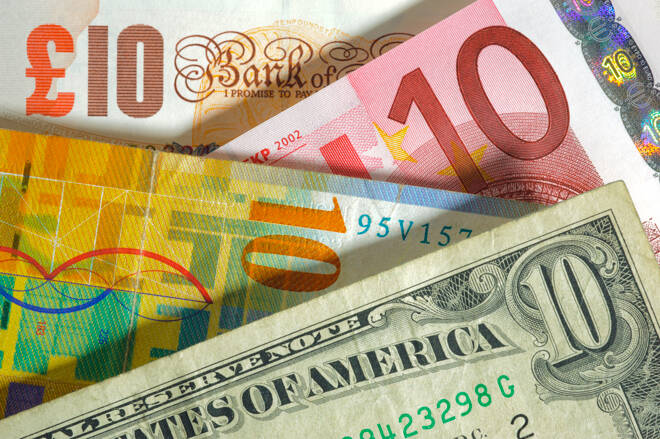Advertisement
Advertisement
Economic Data Puts the EUR and the Greenback in the Spotlight, with the BoJ also in Focus
By:
It's a relatively busy day ahead, with stats from the Eurozone and the U.S in focus later in the day. COVID-19 news updates will also need monitoring, however...
Earlier in the Day:
It was a quieter start to the day on the economic calendar this morning. The Kiwi Dollar was in focus in the early hours. Later this morning, the Bank of Japan will also be in action, delivering its July monetary policy decision.
For the Kiwi Dollar
Business PMI and inflation figures were in focus.
In June, New Zealand’s Business PMI jumped from 58.6 to 60.7. Economists had forecast a decline to 57.0.
According to the latest survey,
- The employment index climbed from 52.0 to 56.5, supported by a further pickup in new orders.
- In June, the new orders sub-index rose from 63.5 to 63.6, while the production sub-index fell from 64.8 to 64.5.
- Despite slower activity in Wellington, as a result of a partial COVID-19 lockdown, other regions saw strong expansion in the month.
- In spite of the pickup in activity, the proportion of negative comments (53.1%) remained higher than positive ones (46.8%).
- Negative comments centered around labor shortages and logistics disruptions that manufacturers are now facing.
On the inflation front, the annual rate of inflation accelerated from 1.5% to 3.3% in the 2nd quarter. Economists had forecast a rate of 2.4%. Quarter-on-quarter, consumer prices increased by 1.3%, following a 0.8% rise in the 1st quarter. Economists had forecast a 0.6% increase.
According to NZ Stats,
- This was the biggest increase in nearly 10-years, driven by higher prices for housing and petrol.
- Supply chain disruption pushed the cost of building a new house up 7.4% for the year and up 4.6% for the quarter.
- Rent prices increased by 2.9% for the year and by 0.9% for the quarter.
- Petrol prices jumped by 16% year-on-year and by 2.6% for the quarter.
- Price increases were widespread, with 10 of the 11 main groups in the CPI basket having higher prices on average than a year ago.
- The sharp increase was attributed to lower prices in the June 2020 quarter, which was as a result of measures put in place during the COVID-19 lockdown.
- Quarterly inflation at 1.3%, however, was also the highest in over a decade.
The Kiwi Dollar moved from $0.69853 to $0.70304 upon release of the figures before easing back. At the time of writing, the Kiwi Dollar was up by 0.31% to $0.70060.
Elsewhere
At the time of writing, the Japanese Yen was up by 0.02% to ¥109.810 against the U.S Dollar, with the Aussie Dollar up by 0.04% to $0.7426.
The Day Ahead
For the EUR
It’s a busier day ahead on the economic data front. Finalized June inflation figures for Eurozone and Eurozone trade data are due out later this morning.
With little else for the markets to consider, expect the numbers to provide some direction. With the ECB’s shift in policy on price stability, however, the trade figures should garner more interest.
At the time of writing, the EUR was up by 0.01% to $1.1813.
For the Pound
It’s a quiet day ahead on the economic calendar, with no major stats from the UK to consider later today.
The lack of stats will leave the Pound in the hands of market risk sentiment and COVID-19 news updates.
At the time of writing, the Pound was down by 0.01% to $1.3828.
Across the Pond
It’s another busy day ahead on the economic calendar. Retail sales and consumer sentiment figures are due out later today.
While the retail sales figures will be key, expect the consumer sentiment figures to also influence later in the day.
Away from the economic calendar, FOMC member chatter will also need monitoring following FED Chair Powell’s testimony in the week.
On Thursday, the Dollar Spot Index rose by 0.23% to end the day at 92.624.
For the Loonie
It’s another quiet day ahead on the economic data front. Wholesale sales figures for May will be in focus alongside foreign securities purchases.
Barring particularly dire numbers, however, the numbers should have a relatively muted impact on the Loonie.
Market risk sentiment will likely be the key driver on the day.
At the time of writing, the Loonie was down by 0.01% to C$1.2596 against the U.S Dollar.
For a look at all of today’s economic events, check out our economic calendar.
About the Author
Bob Masonauthor
With over 28 years of experience in the financial industry, Bob has worked with various global rating agencies and multinational banks. Currently he is covering currencies, commodities, alternative asset classes and global equities, focusing mostly on European and Asian markets.
Advertisement
